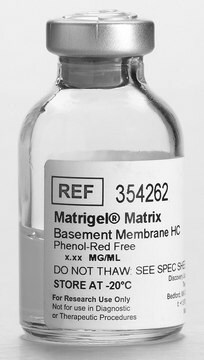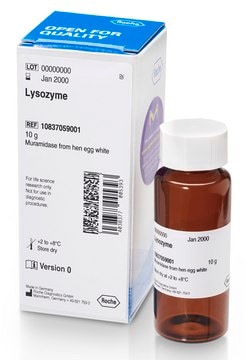Recommended Products
biological source
rabbit
Quality Level
antibody form
serum
antibody product type
primary antibodies
clone
polyclonal
species reactivity
human, rat
manufacturer/tradename
Chemicon®
technique(s)
immunohistochemistry: suitable
western blot: suitable
NCBI accession no.
UniProt accession no.
shipped in
dry ice
target post-translational modification
unmodified
Gene Information
human ... SNCB(6620)
Specificity
Specific for beta-synuclein. Less than 0.1% cross reactivity against human alpha-synuclein.
Immunogen
Synthetic peptide corresponding to the carboxyl terminal of human beta-synuclein (IEPLMEPEGSYEDPPQE).
Application
Anti-Synuclein Antibody, β is an antibody against Synuclein for use in WB, IH.
Immunohistochemistry: 1:500-1:2,000
Western blot: 1:500-1:2,000
Optimal working dilutions must be determined by the end user.
Western blot: 1:500-1:2,000
Optimal working dilutions must be determined by the end user.
Research Category
Neuroscience
Neuroscience
Research Sub Category
Neurodegenerative Diseases
Neurodegenerative Diseases
Physical form
Rabbit serum. Lyophilized, no preservatives. Reconstitute with 50 μL of sterile distilled water. Centrifuge to remove any residue.
Storage and Stability
Maintain lyophilized material at -20 to -70°C for up to 12 months after date of receipt. After reconstitution maintain at -20°C in undiluted aliquots for up to 6 months. Avoid repeated freeze/thaw cycles. Glycerol (ACS grade or better) can be added (1:1) for additional stability.
Legal Information
CHEMICON is a registered trademark of Merck KGaA, Darmstadt, Germany
Disclaimer
Unless otherwise stated in our catalog or other company documentation accompanying the product(s), our products are intended for research use only and are not to be used for any other purpose, which includes but is not limited to, unauthorized commercial uses, in vitro diagnostic uses, ex vivo or in vivo therapeutic uses or any type of consumption or application to humans or animals.
Not finding the right product?
Try our Product Selector Tool.
Storage Class Code
11 - Combustible Solids
WGK
WGK 1
Flash Point(F)
Not applicable
Flash Point(C)
Not applicable
Certificates of Analysis (COA)
Search for Certificates of Analysis (COA) by entering the products Lot/Batch Number. Lot and Batch Numbers can be found on a product’s label following the words ‘Lot’ or ‘Batch’.
Already Own This Product?
Find documentation for the products that you have recently purchased in the Document Library.
Beta-synuclein occurs in vivo in lipid-associated oligomers and forms hetero-oligomers with alpha-synuclein.
E Israeli, R Sharon
Journal of Neurochemistry null
Divya Pathak et al.
eNeuro, 4(2) (2017-05-04)
Increased α-synuclein (αsyn) and mitochondrial dysfunction play central roles in the pathogenesis of Parkinson's disease (PD), and lowering αsyn is under intensive investigation as a therapeutic strategy for PD. Increased αsyn levels disrupt mitochondria and impair respiration, while reduced αsyn
Darren C Robertson et al.
Journal of neurochemistry, 89(5), 1126-1136 (2004-05-19)
The growing body of evidence suggests that intermediate products of alpha-synuclein aggregation cause death of sensitive populations of neurones, particularly dopaminergic neurones, which is a critical event in the development of Parkinson's disease and other synucleinopathies. The role of two
Michael K Lee et al.
Proceedings of the National Academy of Sciences of the United States of America, 99(13), 8968-8973 (2002-06-27)
Mutations in alpha-synuclein (alpha-Syn) cause Parkinson's disease (PD) in a small number of pedigrees with familial PD. Moreover, alpha-Syn accumulates as a major component of Lewy bodies and Lewy neurites, intraneuronal inclusions that are neuropathological hallmarks of PD. To better
Patricia A Trimmer et al.
Journal of neurochemistry, 88(4), 800-812 (2004-02-06)
Many models of Parkinson's disease (PD) have succeeded in replicating dopaminergic neuron loss or alpha-synuclein aggregation but not the formation of classical Lewy bodies, the pathological hallmark of PD. Our cybrid model of sporadic PD was created by introducing the
Our team of scientists has experience in all areas of research including Life Science, Material Science, Chemical Synthesis, Chromatography, Analytical and many others.
Contact Technical Service




